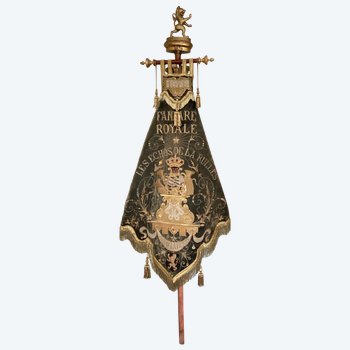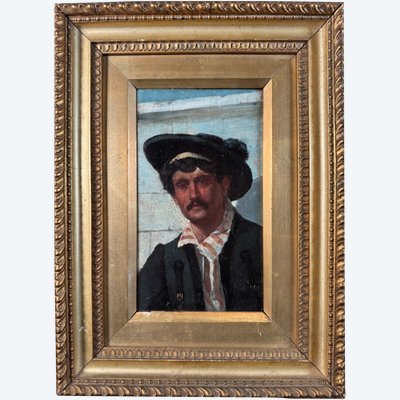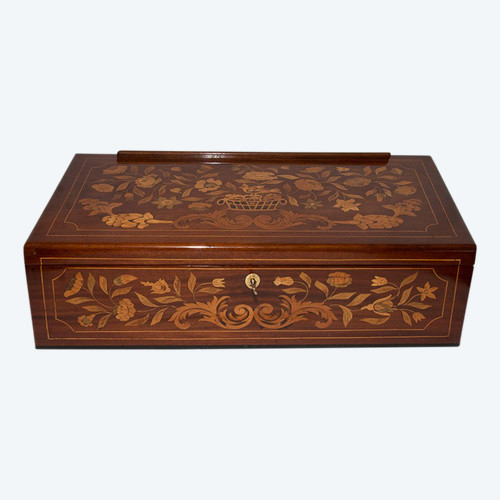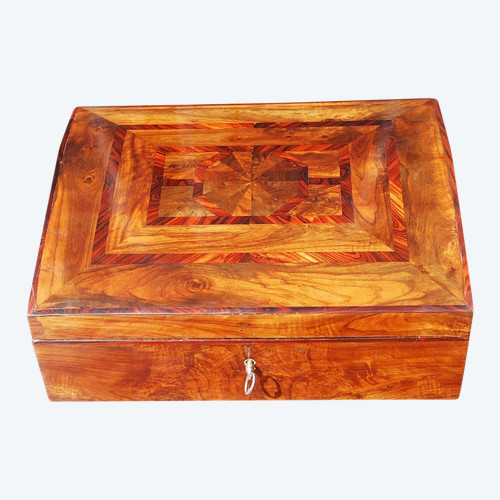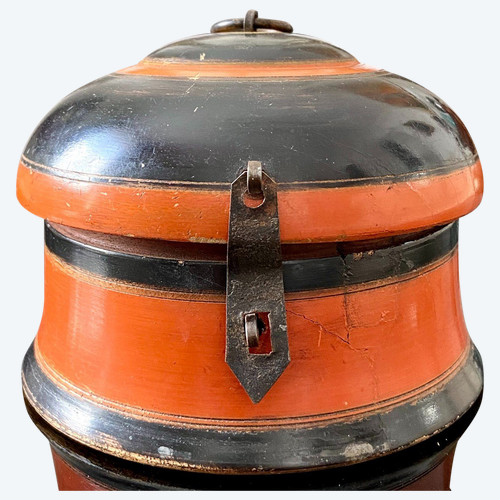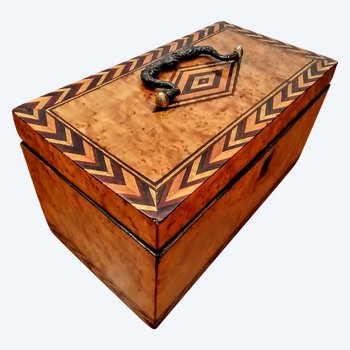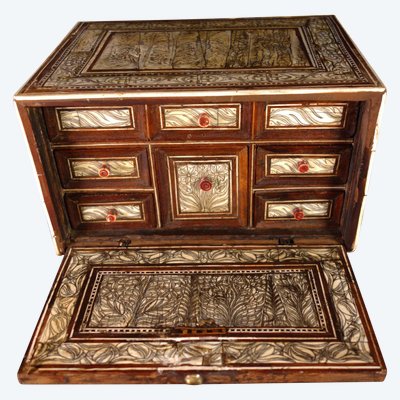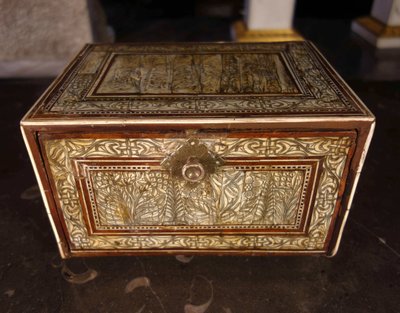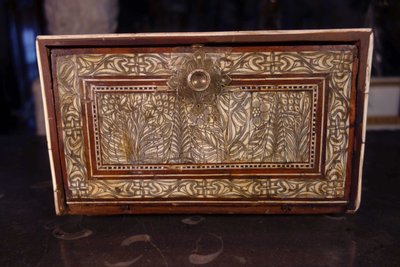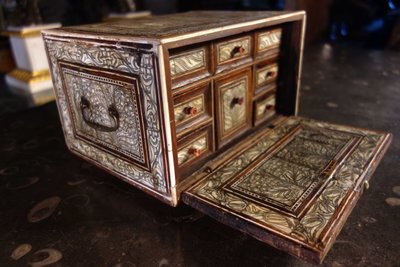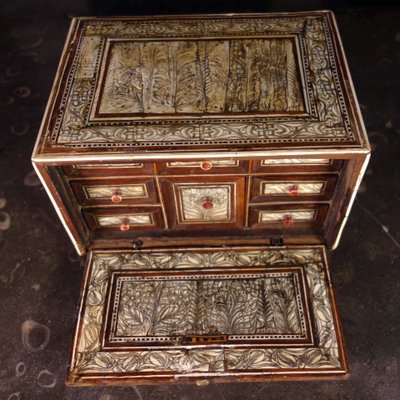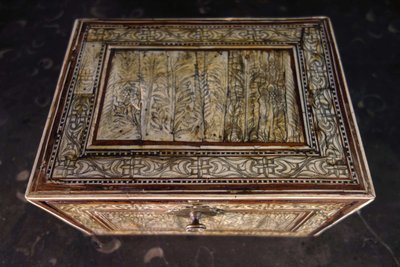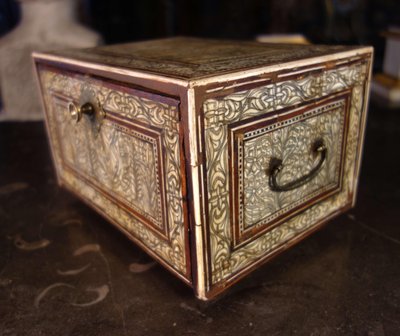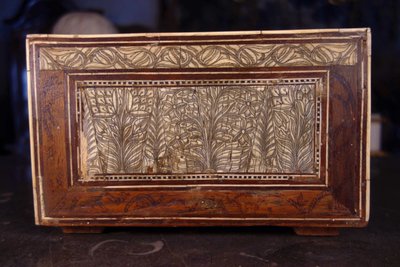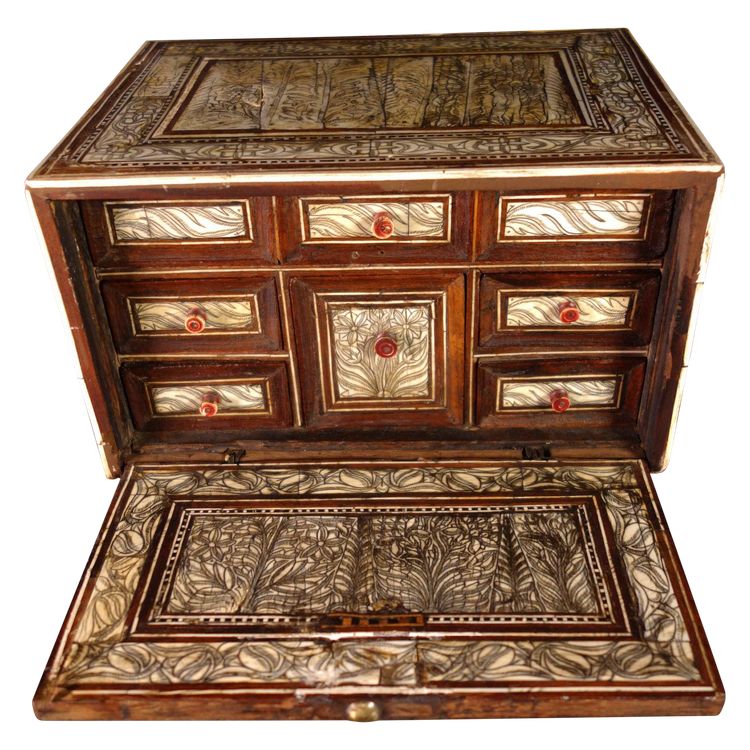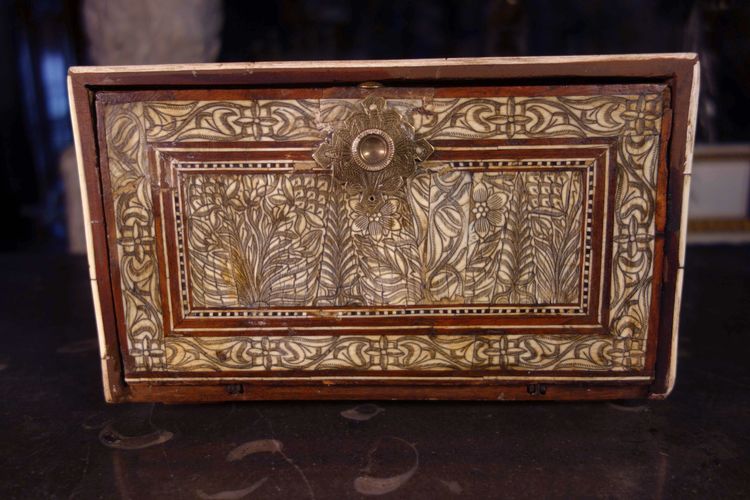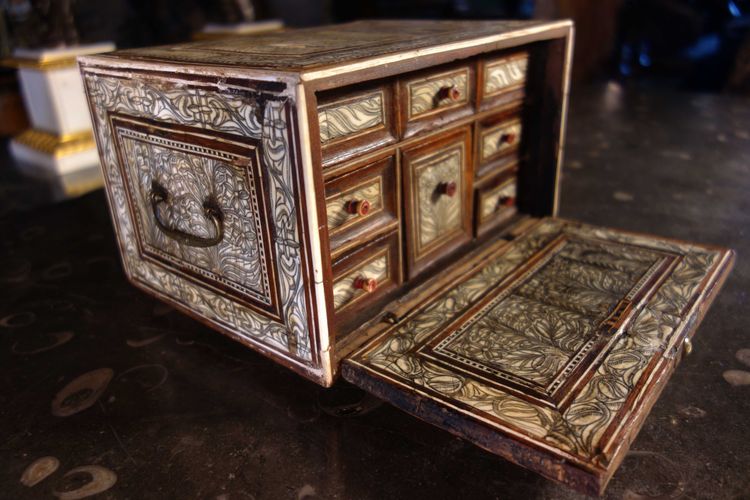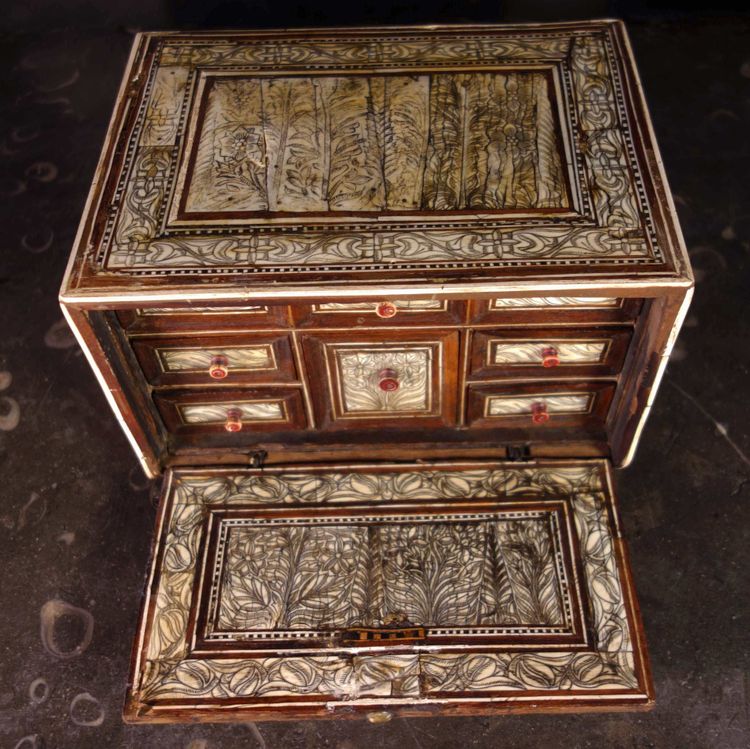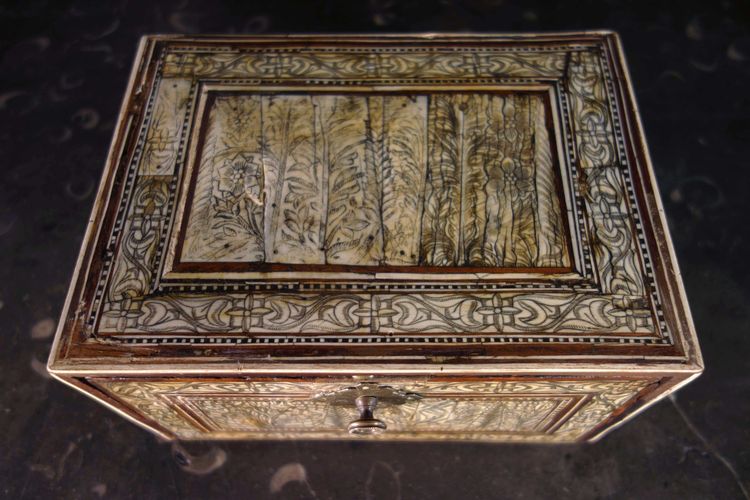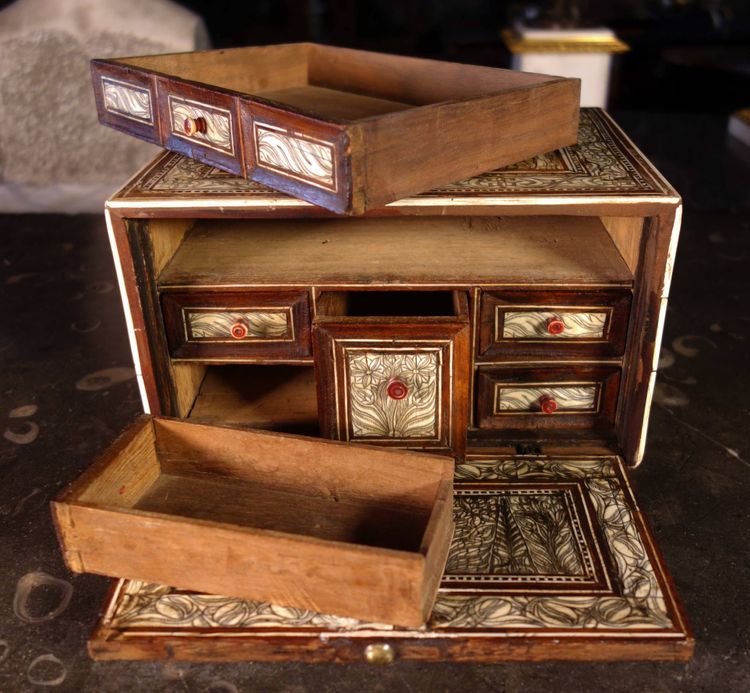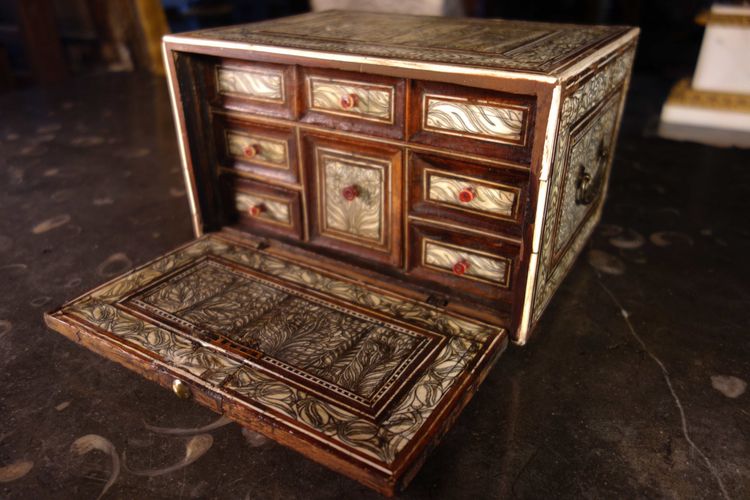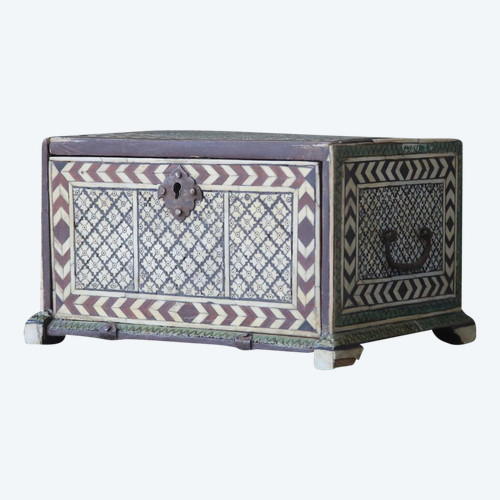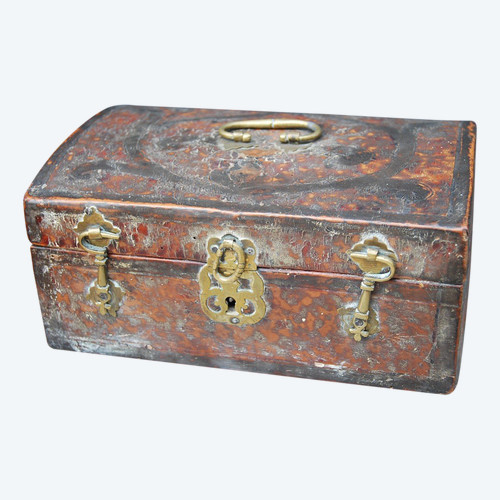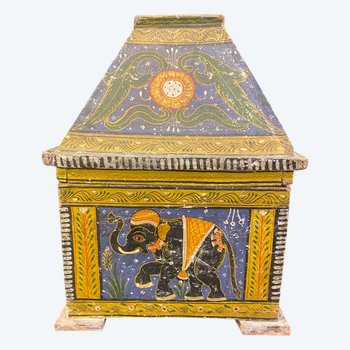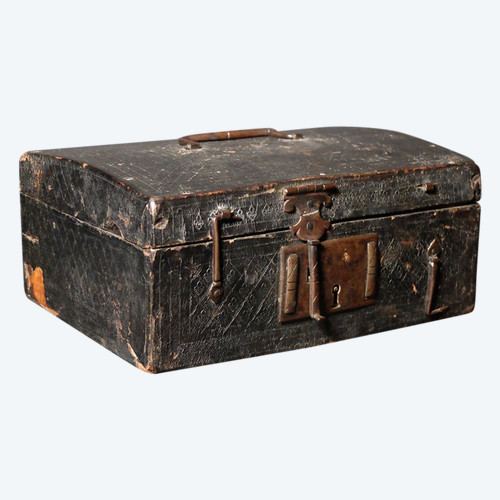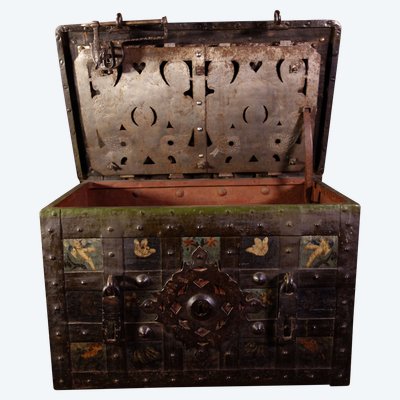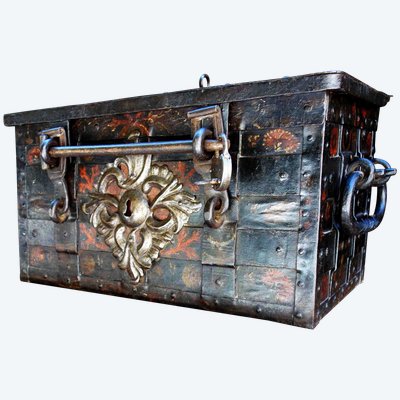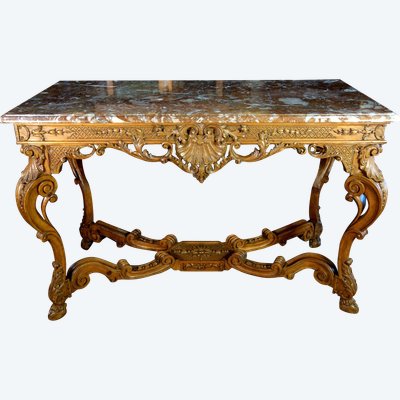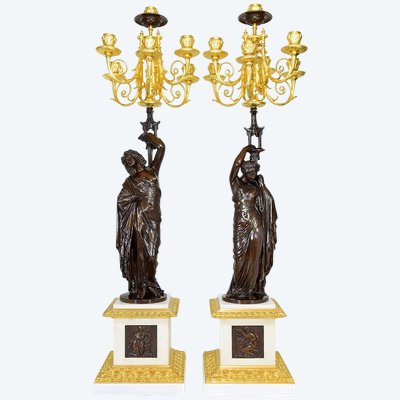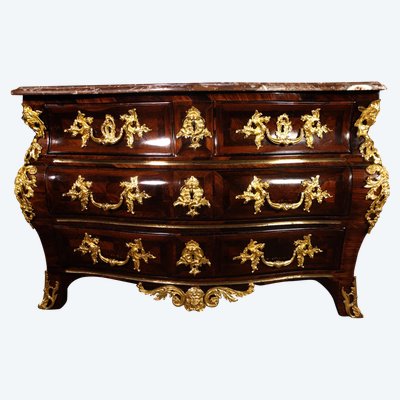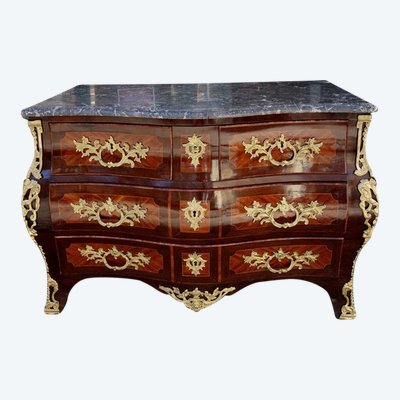This description has been translated and may not be completely accurate. Click here to see the original
Precious 17th-century wooden chest with numerous bone plate inlays. Its flap reveals six drawers. This delicate object was designed to hold the personal effects of merchants and travelers, such as important papers and jewelry. Removable handles testify to the piece's portability. It is likely that the large drawer on the upper level of our box may have held a few precious words and contracts, while the other small drawers were intended for valuables. These chests were made in Western India, which was the hub of the luxury goods trade. Some 17th-century English travelers testify to the quality of these boxes. European demand was very strong. Our box most probably comes from one of the main trading centers in Portuguese-influenced West India.
Goa, Gujarat, Surat and Cambay are cosmopolitan commercial centers with a strong European presence. In these places, it is possible to buy already-made objects, or to hire the craftsman by supplying certain materials or the sums needed to acquire the raw materials. In India, these craftsmen are called "Sutar", "Barhi", "Mistri", "Asari" or "Vadrangi". Know-how is handed down from generation to generation, and techniques are jealously guarded and not passed on to outsiders. The most luxurious creations, like our boxed set, were negotiated in India's largest retailers.
As early as the 16th century, Portugal opened several trading posts in India, with religious as well as economic aims. The commercial competition between European powers was dominated by Portugal. The city of Goa became the capital of a mixed art of Portuguese influences and local know-how, whether in sculpture, painting or furniture. It is known as the "Rome of the Orient". The creations of Gujarat, possibly the city that witnessed the creation of our box, are equally renowned. (Cups, basins, powder flasks...).
Our casket is abundantly plated and inlaid with bone on all sides and on the reverse of the flap with vegetal motifs, foliage, bouquets... The themes of nature, plants and exotic flowers were very popular in Europe in the 17th century. These motifs can be found on our box, which features a generous and abundant decoration of flowers, plants and trees. We can also add that floral motifs are very important in early 17th-century Indian art, not as secondary decorations but as the main, central theme. This phenomenon has its roots in the art of the Mughal Empire, hence the name sometimes given to this type of object, "Mughal Box". Indeed, Portugal has had close ties with the Mughal Empire since the 16th century.
It's important to note that, unlike other Indo-Portuguese chests, ours is also adorned with a finely-decorated veneer on the back. It was therefore intended to be placed in the center of a table after a long journey on the roads of India, so that it could be contemplated from all angles, rather than against a wall.
The blending of Western forms of large and small furniture with Indian materials and decorative techniques gave rise to a wide range of luxury products, including chests, armchairs, cabinets, tables... all of superb quality and therefore highly appreciated by Europeans. Such is the case of the piece we present.
In the book "Luxury Goods from India: The Art of the Indian Cabinet-Maker", author Amin Jaffer points out that certain products were intended as diplomatic gifts.
17th century. Minor restorations, notably the filled-in lock and the four small feet.
Length: 23.5 cm
Height: 14.5 cm
Depth : 17.5 cm
Ref: 1KNA3LJK5C
 Louis Majorelle Art Nouveau showcase
16.800 € EUR
Louis Majorelle Art Nouveau showcase
16.800 € EUR
 Pair of XVIII century carved wooden columns
1.540 € EUR
Pair of XVIII century carved wooden columns
1.540 € EUR



